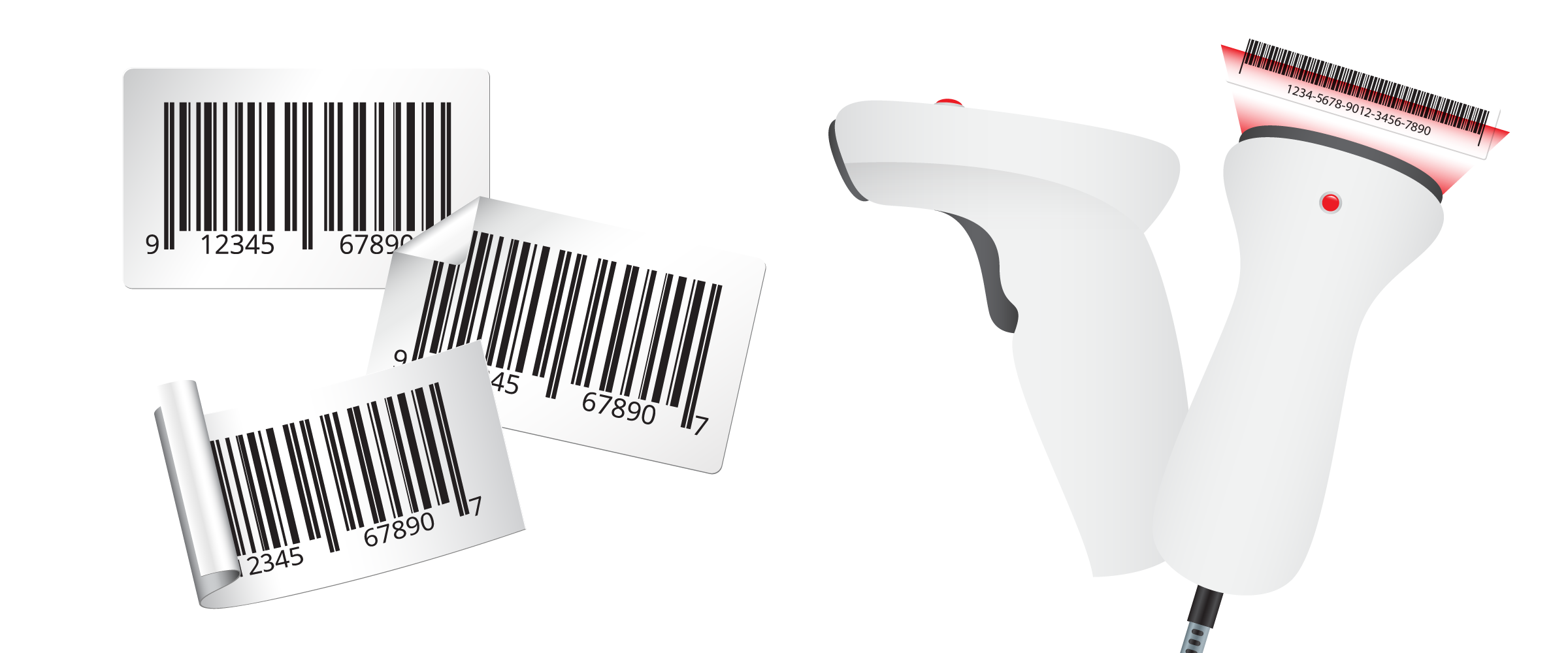Basics of Barcodes
Everyone is familiar with standard UPC or Code 39 barcodes. A UPC barcode identifies the product that has been barcoded. Secondary barcodes on an item might provide additional information including:
- Lot number
- Expiration date
- Serial number
- Other relevant information
So in some cases, it’s necessary to scan multiple barcodes for each item. Normally you want the scanning process during shipping, transfer processes, and physical inventory to be as efficient as possible. Having to scan multiple barcodes on items is not efficient.
For example, I went to a store that sells electronic equipment. To check me out, they had to find and scan two different barcodes to grab the required information (probably the item ID and serial number). In this case, there were multiple barcodes on the item and it took several tries to figure out which barcodes needed to be scanned.
Why Smart Barcodes?
Some systems have the capability to print a “smart” barcode that can hold multiple pieces of information in a single barcode. You would only have to scan one barcode for that item. Most systems try to do this by just concatenating all of the information into one very long barcode by separating each piece of information into special characters or making the information a fixed length. But if the item is small, this doesn’t work – the barcode is physically too long.
Carillon ERP® creates actual “smart” barcodes by assigning multiple pieces of information (eg. Item ID, lot number and expiration date) to a unique system ID. Whenever this barcode is scanned, the Carillon ERP system automatically knows all of the information associated with the barcode. This saves looking for and then scanning multiple barcodes.
When a barcode is printed and applied during the inventory receiving process, it improves internal control and can be a major factor when ensuring that “Everything is on the truck that is supposed to be on the truck and only what is supposed to be on the truck is on the truck”. The Carillon ERP system is passionate about this. The concept of smart barcoding can even prevent expired product from being shipped if that is relevant.
Become More Efficient
Barcoding seems like an old technology that has been around forever. But many mid-size organizations have not implemented yet. If you need lot tracking, expiration date tracking, or serial number tracking, make sure you understand how that information is going to be scanned during shipping, transfer processes and during physical inventory. You don’t want to ignore the information and hope the picker is always picking the oldest non-expired product. But you also don’t want to have to scan items two or three times rather than once.
Barcoding is just one way that Carillon ERP® works to keep your business updated in today’s business world.
Authored by Larry Pettit, CPA, CITP, CGMA. President of Carillon ERP.
Contact us today to learn more about Carillon® ERP’s smart barcodes for distributors.
Don’t forget to follow us on Facebook and Twitter, and also subscribe to our email list to receive updates and stay on top of industry news delivered conveniently to your inbox!
